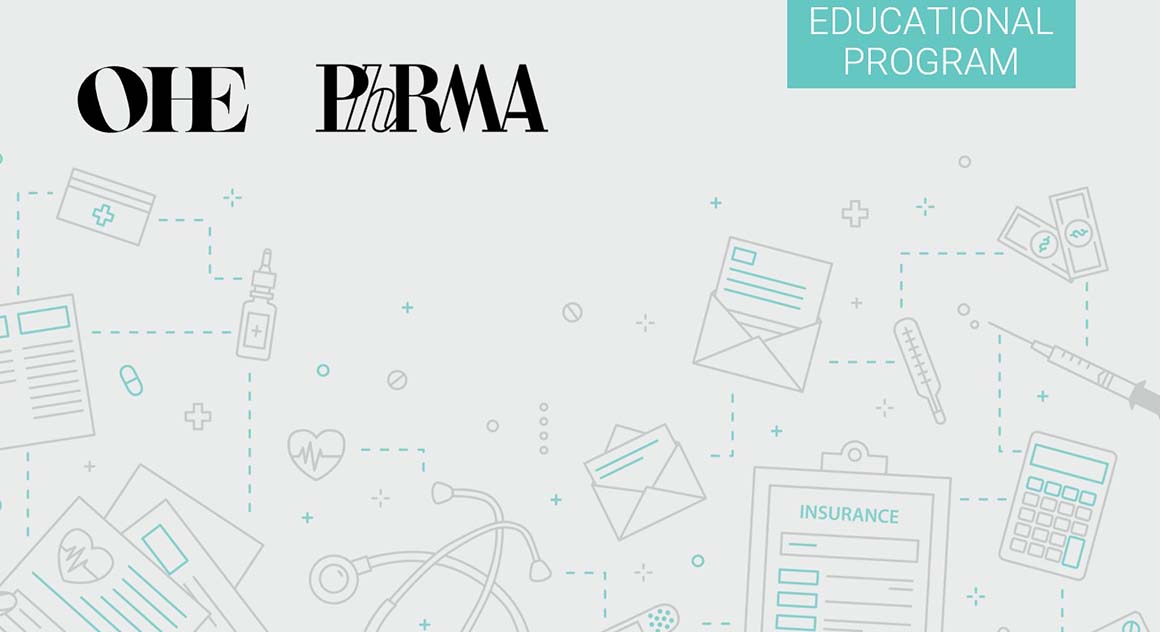This research by a team of OHE and IHE researchers estimates the value added by second generation antipsychotics over their life-cycle in the UK and Sweden. It concludes that considering the entire life-cycle, the value added by SGAs to the system is higher than the expected value estimated at launch. P&R decisions should consider the value added by medicines over the long-run.
The value to society of pharmaceutical innovation depends on the long-term health and related benefits, net of additional costs . Research to generate accurate estimates of this long-term value is important (Lakdawalla et al., 2017; Puig-Junoy, 2018). It can inform a crucial question for policy makers: how much should society pay for new medicines, in order to reward and incentivise innovation?
Countries, governments and/or health authorities often use either Therapeutic Added Value or Cost Effectiveness (CE) Analysis to inform decisions about whether to adopt new medicines at launch. Such analysis is usually based on short-term clinical trial outcomes with assumptions about longer term effects. It is also usually indication-based and so does not reflect any value that the appraised drug may add to society through other possible formulations or indications. It also does not take account of the additional gains to the health care system that may accrue from lower prices when the product goes off-patent, or whilst still on-patent, when new competitors of the same class enter the market.
The present work aims to assess the life-cycle value of innovative medicines using the example of Second-Generation Antipsychotics (SGA). Assessing the entire life-cycle of SGA, the study explores how much additional value has been delivered through additional approved indications for SGAs, generic competition or new and clinically superior formulations launched. It uses risperidone as representative of the SGA class, comparing it to haloperidol – its counterpart from the First-Generation Antipsychotics class (FGA). This research estimates the life-cycle cost-effectiveness of the SGA class against FGA class in incremental terms. It also estimates the absolute social value added, measured by the sum of the consumer and producer surpluses. Study results aim to quantify the nature of value added by pharmaceutical innovation over the long-run to support future research as to whether and how access decisions can be informed by these life cycle effects.
The research estimates the number of patients with schizophrenia who were treated with risperidone in Sweden and the UK, 1994-2017, based on data of usage and volume sales. We collected data from the literature on the effectiveness (QALYs per patient per year) and direct (health services) and indirect (productivity) costs (per year € 2017) of risperidone (SGA) and haloperidol (FGA). Using a comparator from the inferior class, we proxied the incremental value added by the new class of innovative medicines. Next, we modelled the life-cycle uptake of risperidone to estimate the life-cycle incremental cost (i.e., direct, indirect and medicine costs), incremental QALYs and Net monetary Benefit (NMB) of risperidone. We also assessed the life-cycle distribution of the social surplus between the payer (consumer surplus) and the innovator (producer surplus).
UK results show that for during the life-cycle, the NMB for the health system significantly increased in response to two events: (i) the launch of Risperidone Long-Acting Injectable (RLAI); and (ii) generic entry. The ICER was negative (dominant) for the whole period, and savings generated per unit of incremental health gain significantly increased with both the launch of RLAI and generic entry. For Sweden, results show a similar pattern to the UK, albeit with smaller shares of social captured by producer. This is explained by Sweden’s higher willingness to pay for health, reflected in a Swedish cost-effectiveness threshold which is almost three times higher than in the UK.
This joint research by the Office of Health Economics (OHE) in the UK and the Institute for Health Economics (IHE) in Sweden shows that health systems and societies in general (consumers) were able to appropriate most of the life-cycle value (surplus) generated. The value added by the SGA significantly increased with the launch of RLAI and even more with the entry of generic competition, as the evolution of the absolute surplus distribution, as well as the incremental results for NMB and the life cycle ICER show. This suggests that the life-cycle value added by SGAs to the system was higher than the value that would have been estimated using cost-effectiveness analysis at launch. The latter does not consider generic entry, and the launch of new and more effective presentations and indications.
Consequently, we suggest that pricing and reimbursement decisions should consider how to recognise the dynamic nature of pharmaceutical markets and the full life cycle of value added by innovative medicines. This presents a challenge of estimation, but also of assessing the appropriate share of social value that should go to the producer and to the health system.
Download the full report
here.
Citation
Berdud, M., Wallin-Bernhardsson, N., Zamora, B., Lindgren, P., and Towse, A. (2019). Assessing the Life-cycle Value Added of Second-Generation Antipsychotics in Sweden and the UK: The Case of Risperidone. OHE Research Paper 19/xx, London: Office of Health Economics. Available at:
https://www.ohe.org/publications/case-risperidone-assessing-life-cycle-value-second-generation-antipsychotics-sweden-and
Related research
Berdud, M., Garau, M., Neri, M., O’Neill, P., Sampson, C. and Towse, A. (2018). R&D, Competition and Diffusion of Innovation in EU: the case of Hepatitis C. OHE Research Paper 18/06, London: Office of Health Economics. Available at:
https://www.ohe.org/publications/rd-competition-and-diffusion-innovation-eu-case-hepatitis-c
Lakdawalla, D., MacEwan, J.P., Dubois, R., Westrich, K., Berdud, M. and Towse, A., 2017. What do pharmaceuticals really cost in the long run? The American Journal of Managed Care, 23(8), pp.488–493.
Lindgren, P. and Jönsson, B., 2012. Cost–effectiveness of statins revisited: lessons learned about the value of innovation. The European Journal of Health Economics, 13(4), pp.445–450.





